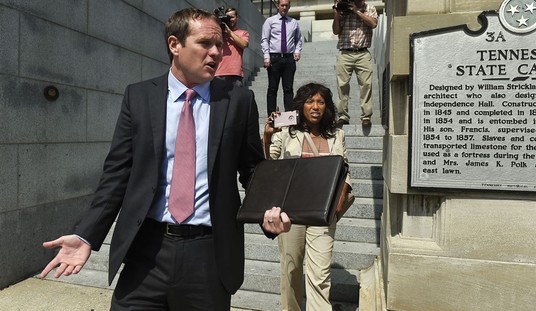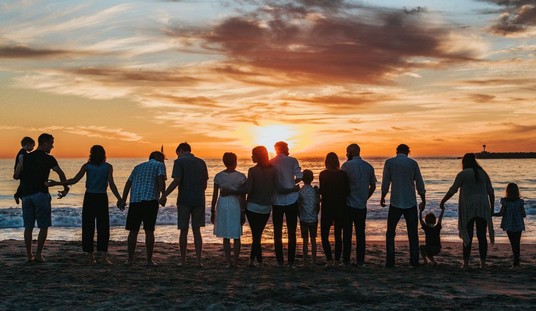Thanks to the continuing withholding of information about the origins of the Wuhan virus by the Communist Chinese government, there is still much that the world does not know that would potentially be very beneficial in combating the pandemic. For whatever reasons – to mask the real origin of the virus, avoid embarrassment, limit liability, save face, etc. – the Chinese have not been forthcoming and in fact have instituted a massive propaganda campaign to shift the blame to others and deny any responsibility, as reported here by Axios:
Why it matters: We’re getting a glimpse of how China’s formidable propaganda apparatus can obscure the truth and change narratives abroad, just as it can at home. The stakes are high — for the world and China’s standing in it.
What’s happening: Chinese diplomats are taking to Twitter and email, pushing talking points that deflect blame from Beijing and instead praise its response.
The efforts are getting a boost from Chinese state-run media.
“The CCP is masterful at rewriting history and we’re watching them do it in real time,” Bill Bishop, author of the Sinocism newsletter, told Axios.
During her Tuesday night show monologue, Fox News commentator Laura Ingraham summarized previous coronavirus outbreaks and identified six items concerning the Wuhan coronavirus about which there are still major questions outstanding. Here is what she had to say:
Ingraham: While the nations of the world frantically try to share information necessary to stop the spread of the virus and treat infected people, the ChiComs remain aloof and even claim that “the crisis is past” while suppressing free press reporting by Western journalists. Something smells fishy!
The Wuhan pandemic has upended our lives. It’s thrown our economy into a complete tailspin. It’s worth quickly reviewing what we know, and what we still DON’T know about the current outbreak. Now for starters, we know that COVID-19 is only the latest coronavirus to infect and kill people across the globe. We know what happened with other coronaviruses outbreaks. In November 2002, Severe Acute Respiratory Syndrome (SARS) was discovered in southern China. It infected 8,098 people worldwide including 8 in the US and killed 774 people worldwide (none in the US) – a death rate of 10%. It was largely over by July 2003.
The first case of MERS – Middle East Respiratory Syndrome – occurred in Jordan in April 2012. It spread through contact with camels and close person-to-person interactions, such as caring for an infected person. Now 2,494 were affected globally (2 in the US) resulted in 858 deaths (none in the US) – a fatality rate of approximately 35%.
Then there is the newest coronavirus, COVID-19. The virus is in more than 150 countries, with 197,000 infections, and approximately 8,000 deaths. In the US, we are just ramping up tests and have nearly 6,300 infections and approximately 110 deaths. And we know that most of the victims are elderly or otherwise infirm individuals. But there are many important questions about this virus that remain, and the answers are going to tell us whether the remediations actions that we have taken – the sheltering in place, etc. – were right or wrong, too much or too little.
Number 1: The true morality rate. As the Guardian reported, “We don’t yet know how dangerous the new coronavirus is, and we won’t know until more data comes in…” Estimates range from below 1% in the young to over 14% among seniors or the medically compromised. Now here in the US, it seems that the more we test, the lower the mortality rate. That makes everybody feel a little bit better, doesn’t it?
Number 2: Contagiousness. People are terrified that they’re gonna get the disease by just walking by someone on the street or in a grocery store going out to get milk or by sitting next to someone in a doctor’s office for just five minutes. But Dr. Richard Martinello, an infectious diseases specialist at Yale University said, “There is still much to learn about how this pathogen is transmitted between individuals. Data is needed not only to better understand when those who become ill shed the virus, but also which body fluids contain the virus and how those may contaminate surfaces and even the air surrounding them.” There was also an important study conducted by a Stanford researcher on the first confirmed instance of the virus spreading person-to-person in the US. It was a woman in her 60s, who returned to the US from China in mid-January. Of her 372 traced contacts, a study published in The Lancet found they had “only detected transmission of SARS-CoV-2 in a single household contact with frequent prolonged interactions with the index patient.” So out of 372 contacts, only one person who basically lived with her (her husband) got it.
Number 3: Why some get sick and some don’t. We don’t know why some of those infected experience only mild cold-like symptoms that resolve on their own while a significant minority of those infected may have serious symptoms that lead to pneumonia and even death. Now one theory is that the severity of symptoms is linked to the strength of a person’s general immune system. But that’s just one possible explanation.
Number 4: Patient “Zero”? We still don’t know who the first patient was who contracted the virus in China. Now that’s a key fact that a lot of researchers say is essential to the analysis of this disease. Now we first heard … like late December … that it was December 1st … and now late reports take it all the way back to November 17th. Now this means that the coronavirus started spreading for weeks before the first cases were officially reported by China.
Number 5: Trusting the Chinese. As soon as word got out about this new potentially deadly virus, the ChiComs began to crack down on journalists for doing their jobs. For example, the NY Times reported in January that “when a group of Hong Kong journalists went to the Wuhan hospital that took in most coronavirus patients, the police detained them for a few hours …. They were asked to delete their TV footage and hand in their pones and cameras for inspection.” And today China announced that it was expelling American journalists from the NY Times, the Washington Post, and the Wall Street Journal. [The ChiComs cited] “ideological bias against China, fake news made in the name of press freedom, and breaches of ethics in journalism.” Well, China’s motivation here is obvious; it further allows them to deprive us and their own people of real information – accurate information – on what the heck is going on, and what happened originally with this coronavirus.
(video clip of Secretary of State Mike Pompeo: “I regret China’s decision today to further foreclose the world’s ability to conduct the free press operations that frankly would be really good for the Chinese people in these incredibly challenging global times where more information, more transparency are what will save lives.”)
Speaking of saving lives, we still don’t know what that fate is of the two citizen-journalists who disappeared last month after questioning the Chinese government’s response to the virus. They’re just gone
Number 6: China’s relationship with the World Health Organization. Remember, China is co-founder of the WHO, and China provides an enormous amount of funding to it. They are now the second-largest donor after the US. But somehow, they seem to be pulling all the strings. CNN is reporting that, “The WHO’s praise of China’s response has led critics to question the relationship between the two entities. … Perhaps one of the most overt examples of China’s sway over the WHO is its success in blocking Taiwan’s access to the body, a position that could have very real consequences for the Taiwanese people if the virus takes hold there.” So when you hear officials here or journalists even … commentators lauding the Chinese containment of the virus, take that all with a very large grain of salt. And remember, while we’re wise to heed expert advice from trusted US sources during this time, we should also remember that there is a lot that we do not know. And a lot of information coming from China that we frankly cannot trust.
End of Ingraham’s opening monologue. President Trump and his administration are right to continue to press the Chinese to “open their books” on what they know about the Wuhan virus and to share all information available with public health organizations around the world. It’s not about the Chinese “saving face”; it’s about saving lives around the world.
The end.











